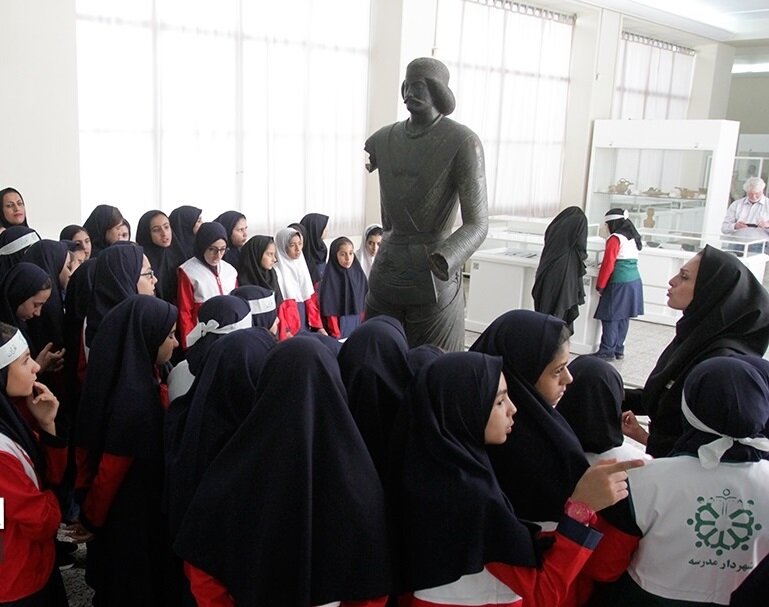Expert calls for archaeologists’ involvement in schools to raise awareness of cultural heritage

TEHRAN - Mostafa Dehpahlavan, who presides over Iran’s Research Institute of Cultural Heritage & Tourism, has called for collaborative efforts to integrate cultural heritage treasures into the school curriculum.
The senior Iranian archaeologist says archaeologists and researchers in the field of cultural heritage can play an important role in enhancing cultural literacy and establishing and strengthening the bond between children, adolescents, students, and cultural heritage.
“They can provide the necessary information for a proper understanding of safeguarding cultural heritage in school sessions,” Dehpahlavan said in a recent interview with IRNA.
“Improving the state of heritage education and increasing the significance of cultural heritage in the public's mindset requires long-term planning and collaboration among various governmental sectors, particularly education and cultural heritage.”
Establishing a proper understanding of the "significance of cultural heritage" and comprehending the critical mission of "safeguarding cultural heritage" necessitates "culturalization," investing in all segments of society, especially children and adolescents, the expert said.
“Undoubtedly, the presence of archaeologists as educators in schools, delivering relevant lessons, establishing suitable museums for educating children and the younger generation, and certainly launching dynamic museums equipped with educational and recreational facilities can play a significant role in executing purposeful and systematic educational programs for children.”
The head of the Research Institute also stated:" The cultural heritage of any land reflects the thoughts and identity of its people. Iran, which is rich in both material and spiritual heritage from its predecessors, faces challenges among its people in safeguarding this heritage.
Dehpahlavan emphasized that some of the challenges in safeguarding cultural heritage stem from the cultural and scientific ignorance within society regarding archaeological activities and the lack of proper understanding of the nature and significance of these activities. “Apparently, a proper connection between archaeologists and the public has not yet been established.”
“Children, as an essential shaping force for the future, are crucial in establishing a proper link between the concerns of archaeologists and the general community. They hold significant importance and possess ample capacity and potential, both materially and spiritually, for investment,” he explained.
The expert underlined that through appropriate and targeted education, children can serve as cultural ambassadors for society, contributing significantly to raising awareness, culturalization, and fostering sensitivity towards the protection of cultural heritage.
“Proper education of children and adolescents in the realm of cultural heritage necessitates collaboration among various entities and diverse sectors, such as the Ministry of Cultural Heritage, Tourism and Handicrafts, and the archaeological community.”
Archaeologists can provide the necessary information for a proper understanding of safeguarding cultural heritage, he said.
He emphasized: “Equipped museums, aimed at increasing cultural literacy among various age groups, including even middle-aged and elderly individuals, and raising the public's awareness in the researched and explored archaeological regions, are highly effective in understanding the true essence of their ancestors' heritage and how to safeguard it.”
He said nowadays, scientific efforts within universities and civic organizations have taken shape globally to preserve cultural heritage during urban development projects and sustainable development plans and to present cultural, spiritual, and natural heritage awareness to the public.
Iran is home to one of the world’s oldest continuous major civilizations, embracing settlements dating back to 4000 BC. It also hosts some of the world’s oldest cultural monuments including bazaars, museums, mosques, bridges, bathhouses, madrasas, gardens, rich natural, rural landscapes as well as 27 UNESCO World Heritage sites.
From a wider point of view, Iranian history can be divided into Pre-Islamic and Islamic eras. The Medes unified Iran as a nation and empire in 625 BC. The Islamic conquest of Persia (633–656) that put an end to the mighty Sassanid Empire (224–651) was a turning point in the history of the nation.
AFM
Leave a Comment